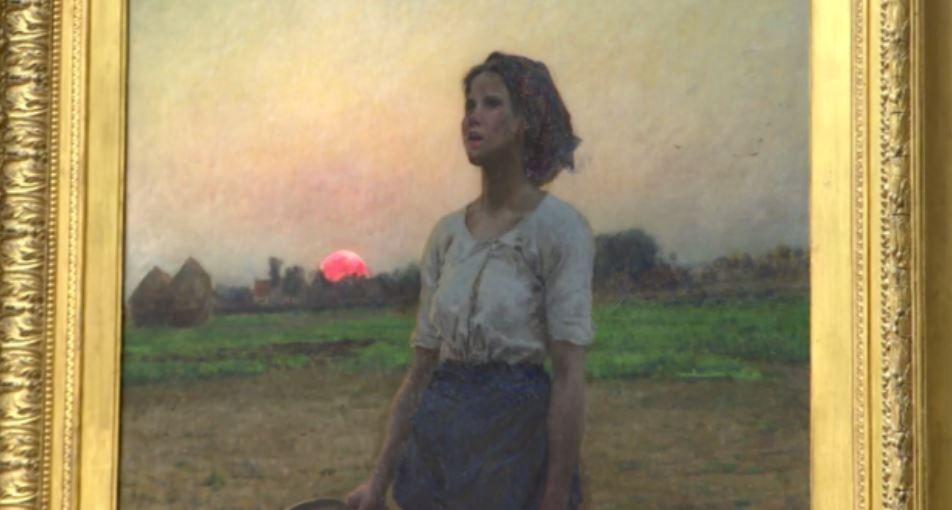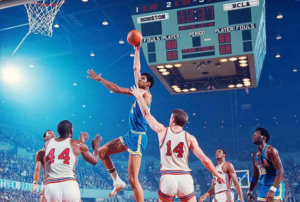In today’s fast-paced digital landscape, stories that resonate on a human level often find a way to capture widespread attention. Such was the case when a social media clip from a 2014 video featuring actor “Bill Murray” began circulating recently, drawing significant interest and sparking conversations anew. This clip, which was highlighted by “CBS News Chicago”, features Murray reflecting on a deeply personal and poignant moment connected to the painting “The Song of the Lark” by “Jules Breton”. It was an unexpected reminder of the profound impression art can have on the human spirit, transcending time and circumstance.
Bill Murray’s Story: Art as a Lifeline
Bill Murray, known for his offbeat humor and versatile acting in films like ”Groundhog Day” and “Lost in Translation”, has long been a figure of fascination. However, this particular story reveals a different, more introspective side of the actor. During a difficult period in his early career, Murray experienced intense feelings of self-doubt and despair. It was at this time that he happened upon “The Art Institute of Chicago”, seeking refuge in its quiet halls, where he encountered Jules Breton’s painting “The Song of the Lark”
The Moment of Connection:
In his recounting, Murray describes standing before “The Song of the Lark”, captivated by its imagery. The painting, depicting a young peasant girl standing in a field at sunrise, resonated deeply with him. He saw not just the girl, but a symbol of hope and resilience—a reminder that despite the struggles of life, there is always a new day ahead. This realization, simple yet profound, was a turning point for Murray, helping him push through his doubts and continue his career.
– Bill Murray’s words: “I thought, ‘Well, there’s a girl who doesn’t have much, but the sun is coming up anyway, and she’s got another chance at it.’”
Analyzing “The Song of the Lark”: The Symbolism and Beauty
Painted in 1884 by Jules Breton, a French Realist artist, “The Song of the Lark” embodies themes of perseverance and natural beauty. Breton’s work often focused on rural life, capturing the spirit and labor of peasants with a sense of dignity and reverence. This painting, now a cherished piece in the “Art Institute of Chicago’s collection”, features a young woman standing in a field, momentarily pausing to listen to the distant song of a lark.
Key Artistic Elements:
– Light and Atmosphere: The painting’s soft, golden light symbolizes the promise of a new day, a concept that resonated with Murray during his lowest point. The sunlight breaking over the horizon represents not only the dawn but also metaphorical hope.
– Expression and Stance: The girl’s stance, slightly leaning forward with a look of quiet contemplation, speaks to the emotional resilience required of those who labor in fields. Her expression, a mix of weariness and serenity, suggests that she, too, is finding solace in the simple beauty around her.
– The Lark’s Song: In art and literature, larks are often symbols of joy and hope, their songs associated with morning and the dispelling of darkness.
Breton’s attention to these details made “The Song of the Lark” more than just a depiction of peasant life—it became a powerful metaphor for renewal and the unwavering human spirit.
The Public Reaction: Why This Story Resonates
The resurgence of this 2014 clip struck a chord with people far beyond the art and film community. Its message resonated particularly strongly in the context of current times, where many people face their own struggles with uncertainty and change. The simplicity of Murray’s experience—finding hope in art—served as a universal reminder that inspiration can come from unexpected places.
Social Media Response:
– Viral Spread: The clip gained traction across multiple platforms, with users sharing their thoughts on how art has impacted their lives. Comments ranged from personal stories of finding solace in museums to reflections on how certain songs, books, or paintings had helped them navigate difficult periods.
– Art as a Collective Experience: Many people were drawn to the reminder that art museums are more than collections of objects—they are spaces for reflection, healing, and inspiration. The story prompted a wave of people sharing their favorite artworks that have helped them through challenging times.
Art’s Role in Mental Health and Well-Being
Murray’s story isn’t just a touching anecdote; it highlights a broader, well-documented role that art plays in emotional and mental health. Studies have shown that engaging with art—whether viewing it, creating it, or discussing it—can significantly enhance well-being and provide comfort during times of stress or depression.
Scientific Insights:
– Therapeutic Benefits: Art therapy is widely recognized for its ability to help individuals express emotions, process trauma, and develop coping mechanisms.
– Neuroscientific Research: Viewing art has been shown to activate the brain’s reward pathways, releasing dopamine and contributing to a sense of pleasure and satisfaction. This might explain why encountering a meaningful painting, such as “The Song of the Lark”, can evoke powerful emotional responses.
– Stress Reduction: Immersing oneself in art can lower cortisol levels, leading to reduced feelings of stress. This could shed light on why Murray felt uplifted after seeing the painting.
Bill Murray’s Advocacy for Art and Museums
Beyond this single story, Bill Murray has been an advocate for art museums and the value of engaging with art. He has participated in various events and made appearances that encourage people to embrace the arts, not just as a form of entertainment but as an essential part of personal growth and well-being.
Murray’s Influence:
– Champion of Public Art: Murray’s influence helps reinforce the message that art should be accessible to all, not confined to academic circles or exclusive events.
– Promoting Local Museums: Stories like his encourage community members to explore local museums and cultural centers, highlighting their importance as spaces that offer inspiration and a sense of connection.
Art’s Accessibility in the Digital Age
The recent viral spread of this clip underscores how digital technology has changed the way people interact with and appreciate art. While traditional museum visits are invaluable, digital media allows stories and works like “The Song of the Lark” to reach a global audience, sparking discussions that may inspire more people to seek out art in their own lives.
The story of Bill Murray and “The Song of the Lark” is more than a tale of personal redemption; it is a testament to the transformative power of art. It shows that, even in moments of despair, there are opportunities for hope and renewal, often found in the most unexpected places. This story has not only rekindled interest in Breton’s work but also reminded millions that art’s true value lies not just in its visual appeal but in its ability to touch and uplift the human spirit.
As more people reflect on their own connections to art and culture, Murray’s experience serves as a poignant reminder: sometimes, it only takes one encounter—one painting, one song, or one moment—to change a life. In a world where many face challenges and uncertainties, stories like this one inspire us to seek out and cherish those moments that remind us of our shared humanity and resilience.
No comments yet.








